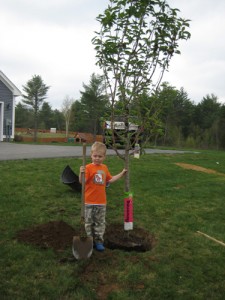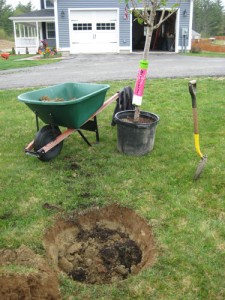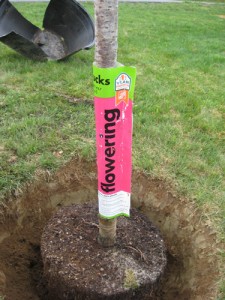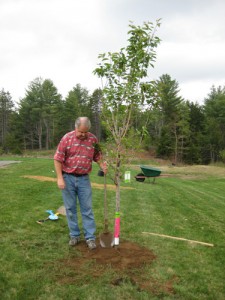How To Plant Trees
Trees Add Value To Your Home


Buy Trees At Home Depot
This spring, The Home Depot is helping you prepare for the season with new and affordable products, informative workshops and inspiring do-it-yourself project ideas. One of the great DIY projects that everyone in your family can help with is planting trees. The fine folks at The Home Depot donated some trees to our family this year so we could share some tips and advice on how to plant trees.
We typically buy our trees at The Home Depot for several reasons. The prices are excellent, the selection always has plenty to choose from and lastly they offer a 1 year warranty on the trees. For this project we bought 2 large (3-inch diameter) flowering Cherry trees and 3 small (1-inch diameter) flowering Dogwood trees. The total cost of these 5 trees was $160 which I think is a very good price compared to similar trees purchased from a nursery.
Home Depot Garden Club




How To Plant A Tree
Planting trees is actually a very easy DIY project that anyone can do. Planting a tree only requires a few simple steps.
- Choose a suitable location for your trees. Be sure the trees are not too close to driveways, walkways and structures. Be sure to read the label on the tree to understand how large the tree will grow to at maturity.


- Next I like to add some good loam and compost to the bottom of the hole (6 inches is more than enough).
- Carefully place the root ball into the hole and rotate the tree so that the best side is facing the direction you want.
- Remove the root ball container (burlap or plastic). Be sure that you don’t damage the roots.
- Now fill the hole around the root ball with lots of water.
- Pack loam around the root ball to completely fill the hole, be sure to pack the soil and check that the tree is plumb as you work.


Special thanks to my 4 yr old son and my father-in-law for the cheap labor digging lots of big holes! Also a huge thanks to The Home Depot for sponsoring this project.
Recent Posts
Framing Stick Nailer vs Coil Nailer
Which is Better a Stick Nailer or Coil Nailer? Framers have many choices in nailers…
How Many Roofing Nails Per Square of Shingles
Estimating How Many Nails for a New Roof When it comes to estimating materials for…
Composite / PVC Decking – Layout Tips & Advice
Composite / PVC Decking Layout Tips and Advice Composite and PVC decking have really changed…
Benefits of an ERV System (Energy Recovery Ventilator)
Benefits of ERV Systems (Energy Recovery Ventilator) If you're building a new home or doing…
Vermiculite Attic Insulation Abatement
Vermiculite Attic Insulation If your home was built before 1990 there is a chance it…
Nuisance Tripping of AFCI (Arc Fault) Circuit Breakers
Arc Fault (AFCI) Circuit Breakers Tripping Often An arc-fault circuit interrupter (AFCI) or arc-fault detection…
View Comments
Great post, very informative! Planting trees is more difficult than you might think, especially when you've never done it before.
One other thing to remember, don't plant the tree too deep. There is a flare at the base of every tree where the roots meet the tree trunk. That needs to be above ground. If the root flare is planted below ground level, the tree will rot at that point and fall over, usually after its been growing for about 10 years or so.
Often you will see trees from the nursery that are too deep in the pot. You can't plant a tree to shallow, but it is very easy to plant one too deep.
It is a great work. But some times it may be difficult to get compost for planting. Therefore, I suggest that it is also possible to churn the excavated soil. That is, keeping the upper soil to lower layer and the deep soils to upper part. 'Trees means water, water means bread and the bread is life' So, let us plant a tree in order to fight against hunger.
Thanks